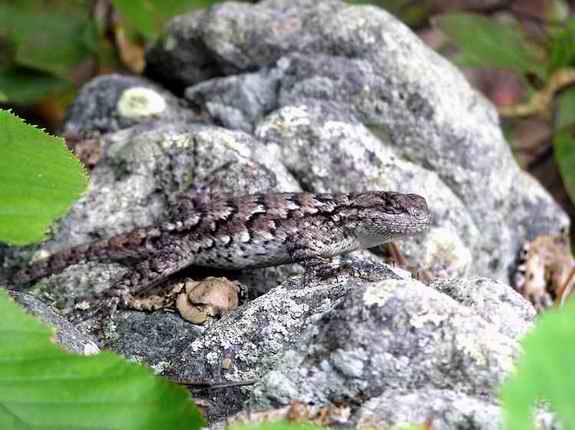|
Common Name: Eastern Fence Lizard (named for its propensity to stay near a tree, fence or other vertical surface in order to rapidly escape from predators) Scientific Name: Sceloporus undulatus (Scelo is leg and porus is pores for the pores on the hind legs; undulatus for the characteristic dorsal undulated or wave pattern)
S. undulatus is a highly variable species that is dispersed geographically across the southern United States from Delaware to Arizona. There are as many as ten recognized subspecies, including a prairie variant (S. u. consobrinus) which is thinner as an adaptation for running and a canyon variant (S. u. tristichus) which has mottled pigmentation as an adaptation to the rocky environment. A recent mitochondrial DNA sequencing of 78 individuals concluded that S. undulatus actually represented multiple separate species that originated in the Southwest during the Pleistocene Epoch (1.8 million years ago) when a Gulf Coast Corridor allowed for genetic dispersal.
Male and female Eastern Fence Lizards establish home ranges as a means of ensuring adequate resources for survival, the male range being determined primarily by the location of the female. They capture and eat a variety of invertebrates, favoring beetles, by remaining motionless and pouncing on their prey from a camouflaged concealment.
The female S. undulatus, like some other reptiles, has the ability to delay egg laying when environmental conditions are adverse. This process, which arrests embryonic development for up to twelve days, is believed to be part of the evolution of viviparity. |
